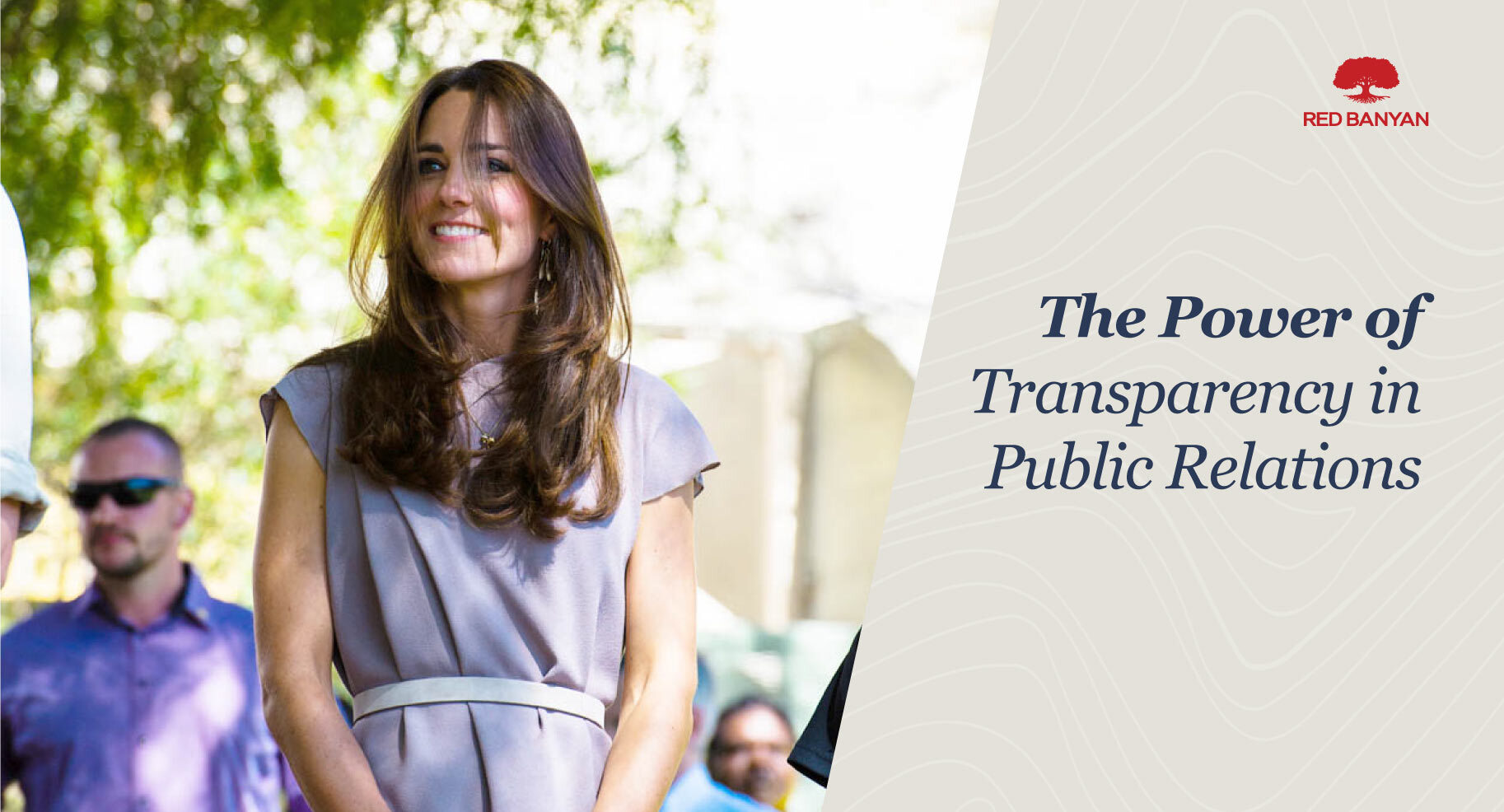The Power of Transparency in Public Relations
March 20, 2024 | Category: Blog, Branding, Content Marketing, Public Relations, Red Banyan

Transparency in public relations is more than just sharing information; it’s about fostering honesty, accountability, and trustworthiness. And when it is absent, the void it creates affects brand credibility across the board.
Consider the Royal controversy that erupted after the Palace shared a doctored photo of Princess Catherine, who had not been seen in public for two months since undergoing “abdominal” surgery.
A PR move that was meant to tamp down rumors about the Princess’s health instead fueled conspiracy theories about her whereabouts and sent the rumor mill into overdrive.
The Royal family’s failure to be open only served to undermine their credibility and raise questions about their honesty and integrity at a time when they needed to look their best for the public.
This spectacular PR fail underscores how important transparency is for reputation building and cultivating lasting relationships with stakeholders and a misstep by the Royal PR team.
Understanding Transparency in Public Relations
At its core, transparency involves openly sharing information about your brand or business. It means being honest about your business practices, products, and services, and ensuring that there are no hidden agendas or deceptive practices. This openness extends to admitting mistakes when they occur, further reinforcing trust and credibility.
The Royals did the opposite. When a firestorm erupted after the public learned the Palace had shared an altered photo of Kate, the public was left wondering why. It was not until a week later when a short video of Kate strolling outside surfaced that speculation about her well-being began to subside.
The Importance of Transparency in Building Trust
The Royal photo disaster is a textbook example of why transparency is the cornerstone of credibility and trust in public relations. When organizations are transparent about their operations, stakeholders perceive them as more credible and trustworthy. By openly sharing information about their activities, businesses can mitigate skepticism and build stronger connections with their audience.
Moreover, transparency is not just about being forthcoming with information — it’s about demonstrating integrity and accountability. When businesses prioritize clarity, they show that they are willing to take responsibility for their actions, even when things go wrong. This level of honesty builds confidence among consumers and stakeholders, ultimately fostering loyalty and brand resilience.
Things organizations can do to create trust:
- Identify an internal and industry-specific company spokesperson as your organization’s media voice. If you don’t have the right person, hire an outside resource to represent your organization.
- Share news about community activities like volunteer days to promote your organization’s positive impact.
- Be relatable about wins and challenges on social media.
- Share inside content. Showcase R&D labs, production lines, or even your office space. Give your customers an inside view.
- Promote goodwill by publicly spotlighting employee milestones.
Transparency as a Competitive Advantage
In today’s competitive market, organizations that prioritize openness enhance their credibility and gain a competitive edge. Consumers are more likely to choose brands that they perceive as honest, leading to increased loyalty and market share.
Authenticity is essential for long-term success. It’s a tough lesson that the Royals are learning the hard way.
Contact the public relations professionals at Red Banyan to find out how their skills, experience, and credibility can be used to showcase your organization, so it stands out from all others.

